No matter how much you know about log home chinking, there is always something new to discover.
Historically, what are some of the odd materials used for chinking?
As far back as log cabins go, there have been all sorts of attempts to seal out water and other undesirables. Wood slats were placed in between the logs at an angle, these slats were then covered with mud, or a combination of mortar mixed with horsehair or whatever else could be found. In the Northeast section of the USA oftentimes tree moss would be soaked in water and driven into any openings that it could be pounded into. Also in the Northeast, roofing tar or oakum would be used as chinking as well.
Most of these compounds worked for a little while, but they all lacked in adhesion to wood as well flexibility. So when the logs moved, the products used to seal did not, and the next summer or fall, everyone was out “chinking” the home in preparation for the next winter.
There were some limited gains when mortar was used on some specific joint designs, but they over time, developed stress cracks and the nails used to help hold the mix during the installation rusted and allowed the cement to pull away and sometimes fall out. Another thing that happened to the cement-horse or animal hair mixtures was the fact the cement was so alkaline that it eventually dissolved the protein in the hair and left voids in the mortar allowing water and air back in.

What is log chinking?
In early history, chinking or the “Process of Chinking” was the installation of various materials installed in horizontal voids between log courses on log walls to prevent air and water from entering the home. Over the years the process has come to mean the product used, not the process per say.
How is chinking applied?
Although there are many methods employed, it is usually the applicator’s choice of methods and tools to make it the most efficient for them. For example; Perma-Chink can be applied right out of the pail using inexpensive tools that can be purchased from Perma-Chink along with necessary Backer Materials. The most popular combination for homeowners and contractors alike is the Cox Bulk Loading Gun and Cox Follow Plate, this combo will evenly remove the chinking out of a five gallon pail and gives you the options on tip sizes as they are cut to fit for your project needs. Bulk Loading Gun and Follow Plate use in action at Video’s page https://www.permachink.com/videos.
Once the proper amount of material has been placed in the joint area, it is then smoothed out with a trowel to remove any unwanted air and to insure a good seal against the log surfaces. Once the initial “tooling” has been accomplished, the surface is then lightly misted with water and the final smoothing of the material is done to achieve the desired finish or appearance. The final appearance can be either smooth or rough depending on the preference of the installer.
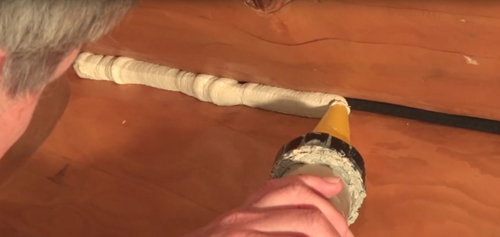
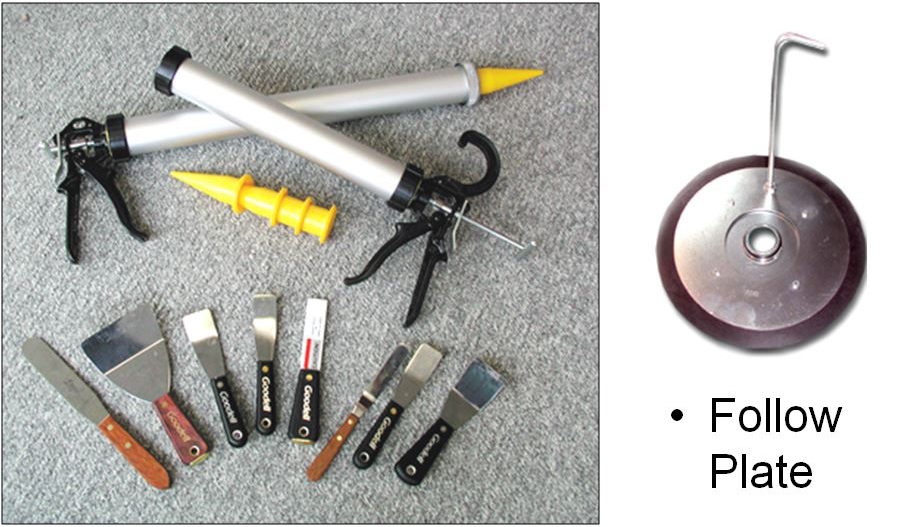
What type of maintenance is needed?
Yes all homes require some form of maintenance, not only log homes. A great degree of the required maintenance needed will start with the basic design of the home. Your log home company can provide you with suggestions that can help lessen maintenance needs; such as porches, orientation of the home to the prevailing weather and the use of proper landscaping to prevent excessive moisture from causing problems.
Other maintenance as far as the stain and finish will depend on your choice of products to start with; look for products designed for log home applications as they are formulated to work well in a log home environment. Get informed about the factors of log home care from the people that manufacture the products for these homes. Pay attention to directions on all products, especially the surface preparation required prior to applying your finish. See if the manufacturer offers any type of workshop or seminar on their products. Make a plan for periodic maintenance, as it will be easier and very cost effective.
Perma-Chink Log Home Sealant requires very little maintenance, unless there is some type of physical damage to the product. Periodic cleaning will keep it looking as good as the day it was installed.
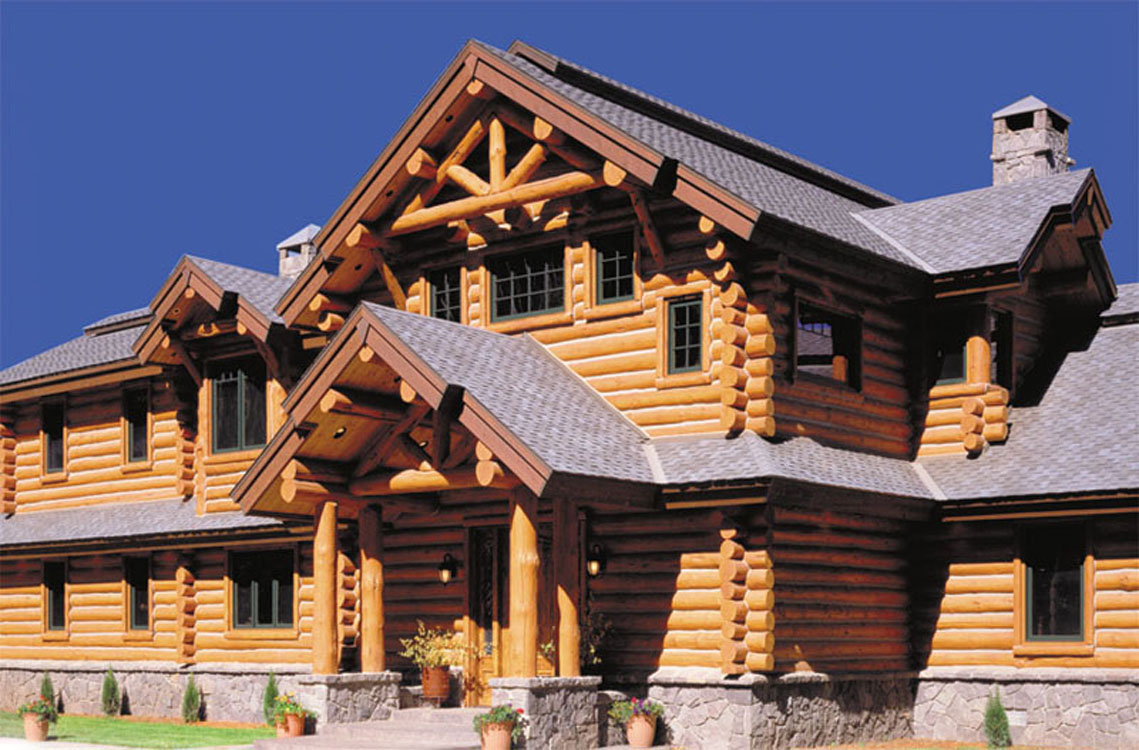
How is log chinking repaired?
When Perma-Chink is properly installed, there are usually no repairs needed unless it is damaged somehow. The hard part is keeping people from trying to “feel” it before it cures, which results in indentations or fingerprints; and those usually occur right at the front door for some reason. But if repairs are needed, small separations can easily be repaired by applying a small bead of chinking into the damaged area and smoothing out with a small brush and water. Most chinking issues are the result of improper application of trying to make too little go too far. Again read the directions prior to application and you should not have repairs to make.
Can you stain log chinking or change color in any way?
The answer is yes; Perma-Chink can be stained but it will not take the color as the wood does, so the results may be undesirable. Perma-Chink manufactures Chink Paint to change the color of the chinking if so desired. Chink Paint uses same raw materials as the chinking, so they are completely compatible with each other.
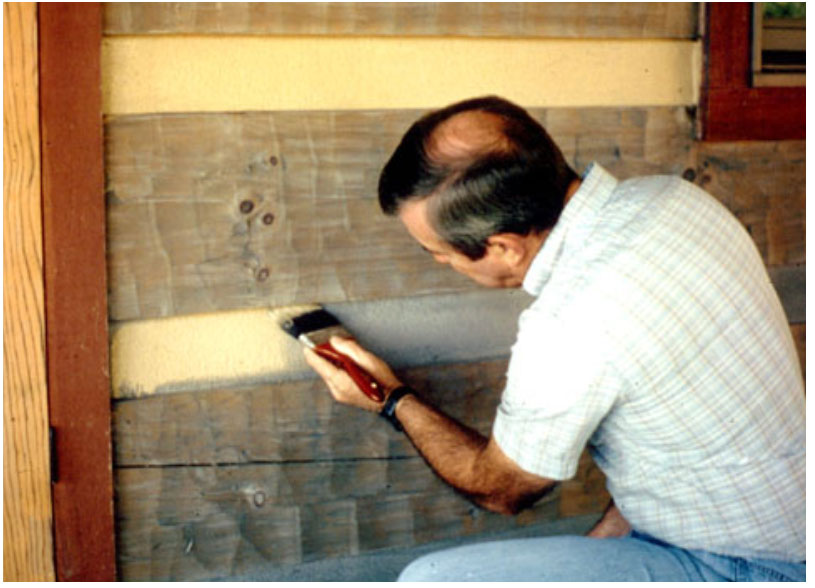
How does it react to the natural shrinking of the exterior log walls?
Perma-Chink is formulated to work in conjunction with anticipated log movement when properly installed at the correct thickness, over the recommended backer material across the face of the joint. Perma-Chink is formulated to have as high as 275% elongation which is much more than any log can move. Also today’s engineered log homes have less movement than in the past, although there is some minor movement associated with climatic changes in all structures. Basically, everything is affected by moisture and temperature to some degree.
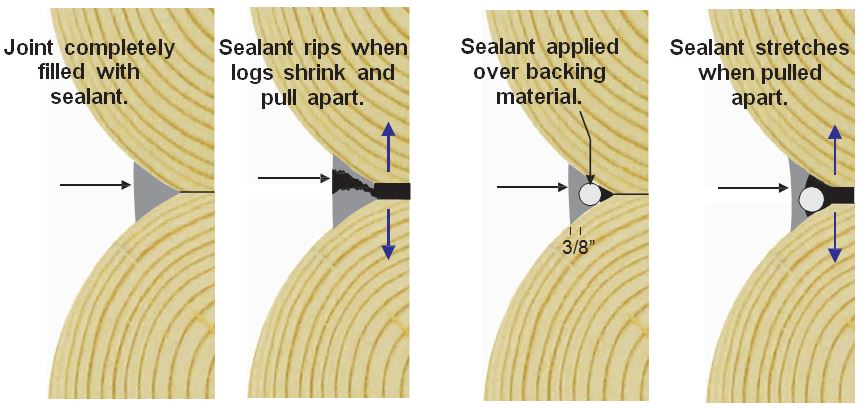
Closing Points
In closing, when you make the decision to build your dream home, do your research and don’t be afraid to ask questions about the home you plan to build. Choose your builder carefully, and choose products specifically designed for log homes.






